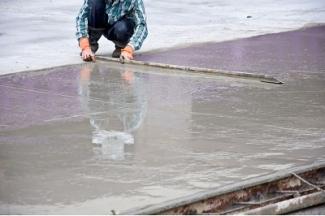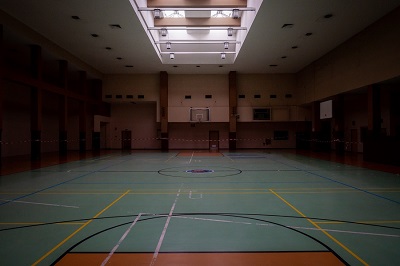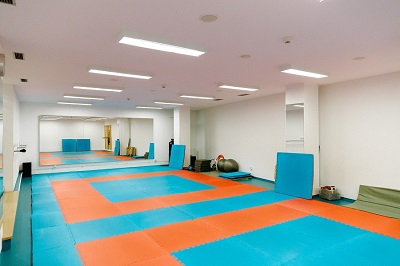
In mid-2021, new regulations regarding special procedures for Urethane Flooring Containing Mercury began to take effect for the state of Virginia. Since then, other states such as Minnesota, New Jersey have followed. In order to ensure compliance with these new regulations, initial and continual mercury vapor testing is crucial. Mercury Instruments USA provides a variety of mercury testing instruments that can provide your establishment with the most accurate mercury readings available. Save time, money, and frustration with high-quality, dependable mercury analysis equipment from Mercury Instruments USA.
Mercury contamination in buildings has the potential to lead to devastating health concerns, particularly for children and unborn fetuses. Continue reading to find out more about what you can do to stay ahead of the regulations and to keep your building inhabitants safe.
Buildings and Flooring Types Affected
The type of flooring affected includes pourable urethane flooring systems installed between the 1960s and 2005. Many of these types of floors contain Phenylmercuric Acetate (PMA) where mercury was used as a curing catalyst during production.
This type of flooring has a rubbery texture and can be found in school gyms, cafeterias, playgrounds, athletic facilities such as indoor and outdoor tracks, and other multi-purpose spaces. As pourable urethane flooring breaks, chips, ages, or deteriorates in any number of ways, it may release vapor with a high enough mercury concentration to cause potential harm to the health of building occupants. Indoor flooring in areas exposed to high temperatures, low ventilation, or improper cleaning methods are at higher risk of increased exposure.
Unlike asbestos, where undamaged fixtures pose little to no risk, urethane flooring continually emits mercury vapor. Covering or sealing urethane flooring is not an option, as sealants can degrade the urethane underneath or become permeated with mercury, posing an even larger contamination risk. Without proper ventilation and temperature control air conditioning, the types of flooring in question pose a consistent risk. The only way to eliminate the potential for mercury exposure is to completely remove the contaminated flooring.
With so many factors at play and so many flooring types that may be confused with urethane flooring, mercury vapor testing is essential to determine the best course of action. Removing and replacing flooring can be expensive and time consuming. Analyzing the concentration of mercury vapor may either help to prioritize the replacement process or help to save your establishment time and money.
Who is The Most At-Risk? 
Anyone exposed to areas affected by high concentrations of mercury can be at risk of mercury contamination though both vapor inhalation and skin absorption. Mercury contamination can be damaging to the eyes, skin, kidneys, lungs, and the central nervous system (CNS). Exposure to mercury has the potential to be especially toxic to children and unborn fetuses.
Physical education teachers, lunch and custodial school staff, and other school personnel who spend significant time in rooms with mercury-containing floors have the highest likelihood of having been exposed to mercury vapor. Children who participate in extracurricular sports that take place on indoor tracks or gymnasiums may also be at increased risk.
Of those potentially affected by mercury contamination, people with prior mercury exposure due to eating fish or seafood high in mercury, having amalgam (metal) dental fillings, or with a recent history of exposure
to other heavy metals such as lead paint or contaminated drinking water may be at an increased risk for mercury poisoning. Anyone who is at-risk of mercury contamination should be aware of the signs, symptoms and side-effects associated with relevant exposure to urethane flooring.
Mercury Contamination Health Concerns
For most people, the low-levels of mercury exposure from urethane floors is not anticipated to cause immediate or long-term adverse health effects among those exposed. However, exposure levels will vary in each situation depending on the condition of the floor, ventilation of indoor areas, and prior health and exposure for each individual. For these reasons, and because many of those at risk include elementary school children or pregnant staff members, some exposures may turn out to be more dangerous than others.
Those potentially affected by mercury exposure should be aware and alert of the potential associated health concerns. Mercury exposure can lead to damage to the skin, eyes, lungs, kidneys and central nervous system. The risk of mercury contamination varies depending on a person’s age, previous health status, the level of mercury a person came in contact with, as well as the frequency and length of time the person was in contact with a contaminated space.
Those who believe they are at an increased risk or who have experienced symptoms associated with mercury intoxication are encouraged to see a health professional for further medical assessment.
Common symptoms of mercury intoxication include: 
- Headaches or migraines
- Trouble walking or speaking
- Changes in hearing or vision
- Tremors, twitching or muscle spasms
- Insomnia or increased exhaustion
- Mood swings, irritability, or anxiety attacks
- Excessive muscle weakness or lack of coordination
- Loss of feeling in hands or face
- Skin rashes and inflammation
Mercury Vapor Sampling & Testing
Testing the potentially affected area for mercury vapor concentration will help your establishment to determine the urgency and need for potential next steps. In some cases, it may be possible that removing and replacing your flooring is not necessary. In this case, testing for mercury concentration first can help to save your establishment a great deal of time and money.
In any case where urethane flooring removal is needed, a mercury analyzer will be needed to continually test mercury air samples throughout the removal and cleaning process. Mercury vapor testing will also be necessary once the contaminated materials have been fully removed and the area has been thoroughly cleaned, and again prior to installing the new flooring.
Because removing flooring can lead to increased levels of dust and debris with high concentrations of mercury, regular sampling and testing is crucial. Continual mercury tracking at all stages of the removal, replacement and installation process will help to monitor all risks involved for workers and other building occupants.
Along with the viable safety measures, continual mercury monitoring also has the potential to identify additional mercury contamination concerns along the way. If high concentrations of mercury are detected during the removal and replacement process, it may help to identify other contaminated building materials such as subflooring, ductwork, or interior concrete walls. Identifying and addressing any additional contamination risks along the way will help save your establishment time, money and heaps of frustration.
How Mercury Instruments USA Can Help
Mercury Instruments USA offers a wide variety of mercury vapor testing instrument options including portable mercury trackers, continuous mercury monitoring systems, and more. Whether your establishment needs to test for initial mercury levels or requires continuous mercury monitoring throughout the urethane flooring remplacement process, Mercury Instruments USA offers the highest quality mercury detection available.
Our mercury analyzers and monitoring systems can detect lower levels of mercury than other instruments on the market. We are also the only mercury instrument supplier offering NIST Traceable calibration services. Depending on your need and budget, our customers also have the option to purchase mercury testing equipment or to browse our mercury analyzer rental options.
Contact Our Team
If you have questions about testing for mercury and how it relates to the new urethane flooring regulations, reach out to the experts at Mercury Instruments USA. The team at Mercury Instruments USA is available to answer questions about the testing and analysis process.
If you are ready to purchase high-quality mercury equipment, need instrument calibration, or would like to inquire about short or long-term mercury analyzer rentals, get in contact with our knowledgeable team today to learn more.
